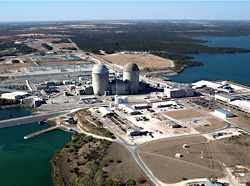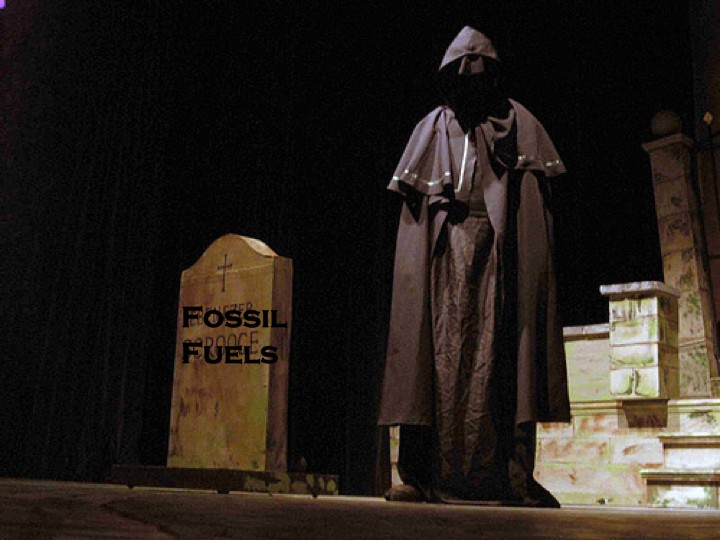 Joe Straus (R- San Antonio) announced in a press conference this morning that he has enough pledged supporters to win the race for Speaker of the Texas House.
Joe Straus (R- San Antonio) announced in a press conference this morning that he has enough pledged supporters to win the race for Speaker of the Texas House.
In holding with the national trend towards change and bipartisanship, Straus will replace the great and powerful Tom Craddick with a pledge to bring harmony back to the sharply divided Texas legislature.
Said Democratic strategist Harold Cook in an article in the Dallas Morning News,
“I don’t know anybody who doesn’t like the guy, and in the Legislature, that’s really saying something,” Cook said. “It’s easy to see why people looking for a new tone out of the Texas House are gravitating toward him.”
Other state Dems agreed,
“He is one of the most honest people that I know,” said Rep. Ruth Jones McClendon, D-San Antonio. “He’s going to be a fair speaker who will rule with an even hand and an open mind.”
We have seen such a bitterly divided legislature in recent years, these reactions sound almost too good to be true. But it looks as though Straus may represent Texas’ brightest hope for a constructive, pragmatic legislative session.
What’s more, Straus has a positive history on ethics reform, open government, and has shown significant leadership on environmental issues. As a member of the Regulated Industries Committee and chairman of the Subcommittee on Energy Conservation and Efficiency, Straus oversaw the passage of the most important energy efficiency bill since deregulation. Straus’ HB 3693 doubled utilities’ efficiency goals to 20% of load growth by 2010 and directed the Public Utility Commission to study whether increasing the program to 50% of load growth is technically possible. This report, released by ITRON a month ago, found that Texas could not only meet but exceed that goal.
Straus has also received awards from both the Texas Public Power Association and the Lone Star Chapter of the Sierra Club for his work in energy efficiency and contributions to public power.
Public Citizen congratulates Straus on being the next Speaker of the House of Representatives, and looks forward to working with him in the upcoming session.
Posted in Global Warming | Tagged Energy Efficiency, ITRON, Joe Straus, Regulated Industries Committee, Sierra Club, Texas, texas house, Texas Public Power Association, Texas Speaker's Race |
Happy 2009, everyone.
Imagine my surprise when I see the new issue of The Economist, now talking about the major problems global warming will be creating called The Curse of Carbon. When even The Economist is coming around on global warming, it seems like things might be changing on the climate change debate. Who’s next? The Free Republic?
From the article:

If the seas continue to become less alkaline at the current rate, the time will soon come when reefs will start to lose coral faster through erosion than they gain it through calcification. How soon? Some scientists think it could be in 60 or 70 years. Many fear that half the world’s coral will be gone by 2030.
The Arctic has lost over 40% of its year-round ice since 1985, 14% in 2004-05 alone. This will not do much directly to raise sea levels, because most Arctic ice is floating, but it suggests that the melting is speeding up, and that is confirmed by the flow of the Jakobshavn glacier in Greenland, which doubled in speed between 1997 and 2003.
Everything depends on the speed at which the ice disappears. Computer models have been predicting that the Arctic will not be ice-free, even for a short time in late summer, until 2040, and at present only icebreakers and the occasional lone yachtsman are getting through. But some people believe change is coming so fast that the northern seas will open up much earlier than expected. They may be right.
If so, it will be seen as a harbinger of a another horror: the prospect of a shutdown of the North Atlantic conveyor. This is the current of water that takes enormous amounts of heat—about as much as would be generated by a million nuclear power plants—from the tropics and carries it to eastern North America and western Europe. The fear is that melting ice, along with increased snow and rain, could reduce the density and salinity of the top layers of the sea, making them more buoyant. At present, the conveyor depends on surface water sinking and travelling towards the equator, there to rise again and bring warmth back to the north (see map in the introduction). If this current stopped, the average temperature in Europe might fall by five to ten degrees Celsius.
They even have a video of the ice melt and the major problems that melting arctic sea ice will create.
Posted in Global Warming | Tagged Arctic Sea Ice Melt, Global Warming, sea level rise, Texas |
A quick plug for an amazing five-part series currently running in the Denton Record-Chronicle about the problems drilling on the Barnett Shale is having. Rig explosions, flooding, mudslides, neighborhood clashes, legal battles, vandalism– it’s like “There Will Be Blood” except happening today… and in Denton. Somebody get T. Boone Pickens on the phone– isn’t he in this movie?
The really scary thing? The Railroad Commission, which is supposed to regulate oil and gas drilling in the state, has two of its three members running for Senate in 2010 in a crowded field. Competing for campaign donations, will either of them dare cross the gas companies? Do we expect them to side with consumers and homeowners, or will they side with the corporate interests? So far, at least, it doesn’t seem like anyone from the EPA to the Railroad Commission is looking after the health and environmental effects urban drilling is causing.
Quick Links here: Part 1 Part 2 Part 3 Part 4 Part 5
Part 1: Eminent Dominance Expansion of natural gas industry into Barnett Shale leaves Argyle families little recourse
Jennifer Cole stepped across the parched ground of a North Texas autumn, past her dirt-caked backyard swimming pool, inching closer to a roaring machine. She watched it force its way through the earth, pushing dirt from side to side in waves like an ocean’s tide. Day by day, the bulldozer was remaking the lot behind her home on Britt Drive near Argyle, changing a sloped meadow dotted with oak trees and cattle into a flat and lifeless expanse. She shivered when she thought about what would fill the void.
Since the dirt-moving process began, dust clouds became so thick that her boys couldn’t make sense of them. “Mom, look! A sandstorm,” one said. Her sons didn’t understand why she wouldn’t let them use the pool or play outside after school. She looked down at the pool where a layer of grime clung to the bottom like black frosting, then back to the rolling bulldozer on the other side of the barbed-wire fence.
Cole didn’t know that what was happening behind that fence would consume the next three years of her life. She did know what the bulldozer meant, though. A gas rig was coming. It was Dec. 4, 2005 — a Sunday.
“Sunday,” she said above the roar, “is no day of rest.”
Part 2: Perils Afoot Gas boom brings potential dangers closer to homes Continue Reading »
Posted in Uncategorized | Tagged Barnett shale, Campaign Finance, Denton, Gas, natural gas, oil drilling, oil shale, Railroad Commission, shale, shale drilling, Texas |
In case you haven’t heard, word on the street is that we’re in an economic recession. Apparently lots of people are losing money, markets are down, and everything is on sale, sale, sale!
Things aren’t any different in the market for recycled goods. Recyling industries are hurting, city government’s aren’t making as much money from their recycling programs, and some are even having to scrap various aspects of their programs. Thankfully, Ms. Fisk’s second grade classroom has taken a stand.
 While paper, plastic, and cardboard prices have all plunged, glass prices have remained stable. Explains Kate Galbraith at Green, Inc:
While paper, plastic, and cardboard prices have all plunged, glass prices have remained stable. Explains Kate Galbraith at Green, Inc:
Why? The main reason, experts say, is that it gets reused domestically. Whereas paper and plastics are shipped to China to be recycled, the glass is often crushed in the United States.
So this New Year’s, raise your glass of bubbly secure in the knowledge that you’ve made the best possible environmental decision in purchasing that recyclable and lucrative glass bottle. If you’re a beer drinker, spring for the longneck over that classy aluminum can. Or better yet, get it on draft! May I suggest Real Ale’s Coffee Porter? The you can feel extra smug because on top of being low-waste, its local! Real Ale brews out of Blanco, and the Coffee Porter is made with organic barley and organic fair trade coffee roasted by Avi Katz in Houston.
Hoppy New Year! (yuk, yuk, yuk) Be safe, y’all.
Posted in Uncategorized | Tagged economic recession, glass, Green Inc, Kate Galbraith, Ms. Fisk, New Year's Eve, Real Ale, recyclables, recycling downturn, Texas |
A truly frightening article from The International News and their Karachi (Pakistan) bureau:
Global warming and the ongoing thinning of Tibetan glaciers will result in as many as 15 million ‘environmental refugees’ in South Asia in the near future, said Chairperson Hisaar Foundation and member of Stockholm-based Global Water Partnership Technical Committee, Simi Kamal.
Full article can be found here.
 Besides Pakistan (who we obviously do not want to destabilize), other major powers who get their water from the Himalayan glaciers include India, China, and other trouble spots like Afghanistan, Bangladesh, Thailand and Burma.
Besides Pakistan (who we obviously do not want to destabilize), other major powers who get their water from the Himalayan glaciers include India, China, and other trouble spots like Afghanistan, Bangladesh, Thailand and Burma.
Emissions in Texas affect the climate worldwide, and as we all have painfully learned, what happens in other countries can end up right back on our doorstep. We need to start cooling it, especially considering that if Texas were its own country we would be the 7th largest polluter of greenhouse gases in the world. Thankfully, we also lead in renewable energy potential and can start saving money today by investing in energy efficiency.
Posted in Global Warming | Tagged Afghanistan, China, environmental justice, environmental refugees, Global Warming, Himalayan glacier melt, India, Nuclear, Pakistan, terrorism, Texas, water, water wars |
December 29, 2008 by Citizen Carol
 In an era dubbed a “nuclear renaissance” by the nuclear industry and during which the Bush Administration has pushed one package of subsidies after another, the Nuclear Regulatory Commission (NRC) has indicated that they expect up to thirty applications to be filed to build additional nuclear plants. Currently, five or six of those proposals are moving through the complicated multi-stage process. Of these early applications, three of them (for 6 nuclear units, 2 per application) are proposed for Texas.
In an era dubbed a “nuclear renaissance” by the nuclear industry and during which the Bush Administration has pushed one package of subsidies after another, the Nuclear Regulatory Commission (NRC) has indicated that they expect up to thirty applications to be filed to build additional nuclear plants. Currently, five or six of those proposals are moving through the complicated multi-stage process. Of these early applications, three of them (for 6 nuclear units, 2 per application) are proposed for Texas.
One of these applications is for Comanche Peak Nuclear Power Plant, located four and a half miles northwest of Glen Rose in Somervell County and about 80 miles southwest of downtown Dallas. Luminant (formerly TXU) filed an application September 19, 2008 to build two additional nuclear units on this site.
The Fort Worth Weekly summarizes the history of Comanche Peak:
The process of building and licensing the original pair of reactors at Comanche Peak turned into one of the most contentious – and frankly scary – developments that North Texas had seen in many years. By the time the plant was finished, it had come through major problems in the construction process, was hugely over budget and more than 10 years behind schedule, and had gone through a hard-fought licensing process that many believe added greatly to the safety of the plant. During that process, activists often questioned the objectivity of the NRC inspectors involved.
Given the problematic history of this plant’s previous licensing process, one would think that the NRC would take particular care in making sure the public felt included in the process. But environmentalists, concerned citizens and the media were caught off guard when federal authorities waited until Christmas Eve to send out notice of a public hearing on the proposed expansion scheduled for January 6th.
Officials confirmed that electronic notices of the Jan. 6th meeting were sent Wednesday, Dec. 24th. In defense of their timing, the NRC pointed the media to an online news release dated Friday, Dec. 19th. Though dated for Friday, the release was not actually posted to the website until Monday, Dec. 22nd.
The notification system is supposed to let interested parties know when these events are occurring in a timely fashion. Burying the notice on Christmas Eve hardly holds to this standard. Continue Reading »
Posted in Nuclear | Tagged comanche peak, Comanche Peak Nuclear Power Plant, Fort Worth Weekly, Glen Rose, Luminant, Nuclear Power, Nuclear Regulatory Commission, Nuke Free Texas, Scoping Hearing, Somervell County, Texas |
What a beautiful gift to find under my cyber Christmas tree this morning (give me a break, its Christmas Eve and I’m going to milk my holiday references for all they’re worth). From harman on earth, the good news that State Senator Rodney Ellis has filed legislation to get Texas working toward a climate change solution.
Harman reports,
The Texas Global Warming Solutions Act, refiled by Ellis for the 2009 Legislative Session after a failed effort to get traction in 2007, would create a state commission to make an accounting of all the state’s greenhouse gas emissions and then help craft policy to begin reducing those levels. It would be quite a task. It has been widely reported that if Texas were its own country (as some would still have it, no doubt), it would rank as the world’s eighth-largest emitter.
To bring those levels down, Ellis’ act would have all state agencies required to account for their greenhouse gas contributions and create plans to reduce them. Private industry would also have to begin to monitor and report their releases.
In order to move forward with global warming solutions, Texas needs a thorough understanding of our contribution to the problem.
Check out Harman’s full post. Brief warning: the cockroach video is just a smidge on the creepy side. My stomach isn’t ready for talking bugs first thing in the morning.
Posted in Global Warming | Tagged 2009 Legislative Session, cockroach, Global Warming, harman on earth, Rodney Ellis, Texas, Texas Global Warming Solutions ACt |
Check out the League of Conservation Voter’s newest ad supporting Obama’s plan to jump start the economy and solve the climate crisis. If only he really did have super powers…
[youtube=http://www.youtube.com/watch?v=vEBzRP-ZJuQ]
Posted in Coal, Energy, Global Warming, Nuclear | Tagged Cartoon Super Obama, DUH, League of Conservation Voter, Texas |
Am I “Crazy” for wondrin’ if lead in artificial turf is a bad thing, or have I just been listening to too much Willie Nelson lately?
 The Corpus Christi Caller-Times reports:
The Corpus Christi Caller-Times reports:
Some of the most hallowed ground in Texas — the artificial turf on its high school football fields — may also be toxic.
Fields in two of the state’s best-known high school stadiums, including the one made famous by the book and movie “Friday Night Lights,” have lead levels far exceeding the Environmental Protection Agency’s standard for soil, according to independent tests done within the last month.
The results, obtained by The Associated Press, are the first public indication that Texas’ prized high school stadiums have become part of the national controversy over whether artificial turf contains unsafe levels of lead.
Testing commissioned by the Ector County school district on the turf at Odessa’s Ratliff Stadium found lead at roughly 14 times the EPA standard. Similar testing by the Birdville school district in the Fort Worth suburb of North Richland Hills discovered a lead level nearly 10 times the EPA standard at that district’s stadium, the Fine Arts/Athletics Complex.
While tests indicated that the top part of the turf that players have the most contact with was not terribly toxic, the lower portions of the faux grass had high lead levels. Water runoff from the Birdville field had lead levels twice the EPA’s drinking water standards, indicating that the lead was leaching into the environment — and perhaps, down the line, into groundwater.
In other states, schools that found lead levels much lower than what has been found in Texas were moved to actually shut down their facilities. In New Jersey, two fields with lead levels 8 to 10 times the EPA’s soil standard were closed this April. In California, a playground with levels just twice the EPA standard was closed down until the turf could be removed as hazardous waste. But here in Texas, despite even higher lead levels, school district officials seem unconcerned.
What is it with Texas? In a post last week on air toxics near schools, we learned that several Texas schools are surrounded by air pollution even worse than what has caused school closures in other states. Now we’re finding lead on school premises in concentrations much higher than what has caused other states to take real action, and school district officials aren’t even concerned. Do we just not believe in the health risks of toxic exposure? Do we not care about our kids? Or are football and industry just higher priorities than a few children with brain damage and cancer?
Bah, humbug.
Posted in Toxics | Tagged artificial turf, Birdville School District, Corpus Christi Caller-Times, Ector County, Environmental Protection Agency, EPA, High School Football, Humbug, Lead, Odessa, Soil Standards, Texas, Toxics, Willie Nelson |
The real question is, will we at Texas Vox run out of holiday references before tomorrow or not?

Some scary, scary stuff out there in the past few days we wanted to show you, plus some extra holiday snark for all of you.
- The EPA also released their list of Sooty Cities (and you thought soot was stuff from only back in the days of Charles Dickens!), and, of course, Houston made the list. Merry Christmas, Houston! You got… soot! Also ending up on the list were my old home towns of Salt Lake City and Provo, Utah.
- And finally, California is buying our cow gas. Seriously. Pacific Gas and Electric plans to buy a methane-based substitute for natural gas created right here in Texas from, of all things, cow manure. Just shows you that one man’s treasure is another man’s… never mind.
~~Citizen Andy
Posted in Coal, Efficiency, Energy, Global Warming, Renewables, Toxics | Tagged cap and trade, Christmas, clean coal technology, Coal, coal ash pond, coal companies, Global Warming, natural gas, particulate matter, pickens plan, PM, soot, Texas, texas vox |
 Ed Abbey would be proud.
Ed Abbey would be proud.
At an auction held by the Bureau of Land Management for oil and gas leases on 149,000 acres of public land in Utah, a University of Utah student and environmental activist named Tim DeChristopher posed as a bidder and bought up 22,000 acres to keep it from industry clutches. Much of this land was from the area right around Arches National Park, a beautiful swath immortalized in Ed Abbey’s book Desert Solitaire. DeChristopher also drove up prices for oil and gas leases on other parcels to the tune of about half a million dollars.
Reports the Salt Lake Tribune:
He didn’t pour sugar into a bulldozer’s gas tank. He didn’t spike a tree or set a billboard on fire. But wielding only a bidder’s paddle, a University of Utah student just as surely monkey-wrenched a federal oil- and gas-lease sale Friday, ensuring that thousands of acres near two southern Utah national parks won’t be opened to drilling anytime soon.
Tim DeChristopher, 27, faces possible federal charges after winning bids totaling about $1.8 million on more than 10 lease parcels that he admits he has neither the intention nor the money to buy — and he’s not sorry.
“I decided I could be much more effective by an act of civil disobedience,” he said during an impromptu streetside news conference during an afternoon blizzard. “There comes a time to take a stand.”
The land was being auctioned off in another last-ditch effort by the Bush administration to win Big Industry some holiday goodies before Obama takes office in January. The BLM didn’t have time to do adequate environmental impact statements, leave much time for public comment, or even take in input from other federal agencies such as the National Parks Service. Apparently in BLM’s intial announcement of the auction, private property with houses on it and land the agency didn’t have rights to drill on was also included. BLM won’t re-open the land DeChristopher’s won for auction until February, when the new administration will be in place. They are also giving bidders who won parcels with inflated prices the chance to withdraw those bids within a ten-day period — but since the Obama administration is unlikely to offer the leases again, most bidders will probably hold on to the land they’ve won.
Watch Amy Goodman from Democracy Now! interview DeChristopher below:
[youtube=http://www.youtube.com/watch?v=I1t9PniD-bY]
And a final Ed Abbey parting shot:
A patriot must always be ready to defend his country against his government.
Posted in Energy, Global Warming | Tagged Amy Goodman, Arches National Park, Bureau of Land Management, Civil Disobedience, Democracy Now!, Ed Abbey, Hayduke Lives, Monkeywrenching, National Parks Service, Oil and Gas Leases, Salt Lake Tribune, Texas, Tim DeChristopher |
 Remember last week, when I was pissed off at EPA Administrator Stephen Johnson for making up last minute rules to get coal plants permitted?
Remember last week, when I was pissed off at EPA Administrator Stephen Johnson for making up last minute rules to get coal plants permitted?
Today this anger is tempered by my love for Senate Environment and Public Works chair Barbara Boxer, who basically told Johnson he was CHEATING AND MAKING UP FAKE RULES.
Boxer sent a letter to Attorney General Michael Mukasey asking that he make Johnson withdraw his “blatantly illegal memo.”
Spake Mrs. Boxer:
Administrator Johnson issued the document without legal authority under the Clean Air Act, and in spite of the clear opinion of the EPA’s Environmental Appeals Board in In re: Deseret Power Electric Cooperative, PSD Appeal No. 07-03 (EAB November 13, 2008). Johnson’s guidance also flies in the face of the U.S. Supreme Court in Massachusetts v. EPA (2007).
BOO-YAH! Sometimes, you gotta love a tattle-tale. Let’s just hope the Attorney General puts Johnson’s ruling in time-out.
Read Boxer’s full letter here.
Posted in Coal, Global Warming | Tagged Attorney General, Attorney General Michael Mukasey, Barbara Boxer, boo-yah, Deseret Power Electric Cooperative, EPA, EPA Administrator Stephen Johnson, Michael Mukasey, Senator Barbara Boxer, Stephen Johnson, Texas |
It’s a Christmas miracle! There’s some good news out there to brighten my day! A huge loophole in air pollution regulation has been closed by the U.S. Court of Appeals for the District of Columbia!
Reports the Washington Post:
In a 2 to 1 decision yesterday, the U.S. Court of Appeals for the District of Columbia Circuit struck down an exemption that for nearly 15 years has allowed refineries, chemical plants and other industrial facilities to exceed federal air pollution limits during certain periods of operation…
The ruling affects sources of air pollution across the country: Texas alone has 250 industrial sites, including oil refineries, chemical plants and petrochemical plants, that are affected.
Before the ruling, plants were allowed to exceed emissions standards if they were starting up, shutting down, or “malfunctioning”. So basically, at almost any point in an industrial operation’s existence, they could find an excuse to violate federal air quality standards.
But NOT ANYMORE. At least, not if the court’s ruling is enforced.
Crud. Foiled again! Santa, I’d like to update my Christmas list please! Save that pony for next year.
Posted in Toxics | Tagged Air Quality Standards, Air toxics, Loophole, Pollution Exemption, Texas, US Court of Appeals, Washington Post |
Good news, coal activists-
According to the Department of Energy in a new report released this week, coal use will actually decline slightly in coming years. This is partially because of the recession and economic problems. Power consumption growth is on the decline, and less capital is available for financing coal plants. However, the data also shows an uptick for renewable energy.
The DOE has also shaved back their predictions of building new coal power plants in the next few years from 104 to 45.
Now if only we can make that number zero.
Posted in Global Warming | Tagged coal power plants, Department of Energy, lump of coal, Texas |

The EPA’s newest decision definitely brought the dreaded “F-dash-dash-dash” word to mind.
Reports Grist.org:
Coal-fired power plants’ greenhouse-gas emissions shouldn’t be taken into consideration when determining whether to approve their construction, EPA Administrator Stephen Johnson ruled this week. The ruling could clear the way for at least a handful of new coal plants to be approved in the final days of the Bush administration. “The current concerns over global climate change should not drive EPA into adopting an unworkable policy of requiring emission controls,” Johnson wrote.
Just as I was getting into the holiday spirit, Stephen Johnson has to hit us with this.
In case you’re not quite as obsessed with carbon dioxide regulation and coal plants as we are here at Texas Vox, let me provide a little background. In November the EPA’s governance board ruled that its regional office had been too hasty in approving a new coal-fired power plant in Bonanza, Utah because the plant didn’t include carbon dioxide emissions or control techniques in their permit application. The Sierra Club helped secure this victory by filing a suit against Utah’s Deseret Power Electric Cooperative for not controlling carbon dioxide. Their argument was based upon the landmark Massachusetts v EPA case, which required the agency to regulate CO2 as a pollutant under the Clean Air Act.
The Bonanza decision was, in a word, wicked awesome (okay, two words). It gave environmentalists a great new tool for stopping coal-fired power plants and signalled a sea change in the government’s willingness to take action over carbon dioxide emissions. So the fact that the EPA is now telling permitters that they cannot consider greenhouse gas emissions when processing applications is a major kick in the pants. It could mean slated plants that wouldn’t have been approved could get the green light during these last weeks of the Bush administration. In a New York Times article, Vickie Patton, from the Environmental Defense Fund estimates that as many as 8,000 megawatts of new coal-fired power plants could skate through as a result of this ruling.
I’m still rather uncertain of what this decision means for the incoming administration. Lisa Jackson, Obama’s new pick to head the EPA, is considerably more progressive on greenhouse gas emissions than Johnson, and could theoretically reverse this decision.
Reports the Washington Post:
It was unclear yesterday what the ruling’s real-world impact will be. The EPA says that about 50 plants — either new or significantly remodeled — must obtain a permit under this provision every year. But Meyers said he does not know if any are positioned to receive final approval before President-elect Barack Obama takes office on Jan. 20.
The Obama administration is likely to review the case, and Democratic officials close to the president-elect’s team say that the Supreme Court ruling and the EPA’s power to regulate carbon dioxide can serve as powerful levers to bring corporations and other parties to a bargaining table about broad framework for controlling greenhouse gases.
Posted in Coal, Global Warming | Tagged A Christmas Story, Bonanza, Coal, Coal Plant Permitting Process, coal-fired power plants, Desert Power Electric Cooperative, Environmental Protection Agency, EPA Administrator Stephen Johnson, Global Warming, greenhouse gas emissions, Lisa Jackson, Massachusetts v EPA, Stephen Johnson, Texas |
« Newer Posts - Older Posts »
 Joe Straus (R- San Antonio) announced in a press conference this morning that he has enough pledged supporters to win the race for Speaker of the Texas House.
Joe Straus (R- San Antonio) announced in a press conference this morning that he has enough pledged supporters to win the race for Speaker of the Texas House.
 While paper, plastic, and cardboard prices have all plunged,
While paper, plastic, and cardboard prices have all plunged, 
 In an era dubbed a “nuclear renaissance” by the nuclear industry and during which the Bush Administration has pushed one package of subsidies after another, the Nuclear Regulatory Commission (NRC) has indicated that they expect up to thirty applications to be filed to build additional nuclear plants. Currently, five or six of those proposals are moving through the complicated multi-stage process. Of these early applications, three of them (for 6 nuclear units, 2 per application) are proposed for Texas.
In an era dubbed a “nuclear renaissance” by the nuclear industry and during which the Bush Administration has pushed one package of subsidies after another, the Nuclear Regulatory Commission (NRC) has indicated that they expect up to thirty applications to be filed to build additional nuclear plants. Currently, five or six of those proposals are moving through the complicated multi-stage process. Of these early applications, three of them (for 6 nuclear units, 2 per application) are proposed for Texas. The
The 
 Ed Abbey would be proud.
Ed Abbey would be proud. Remember last week, when I was
Remember last week, when I was 



